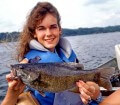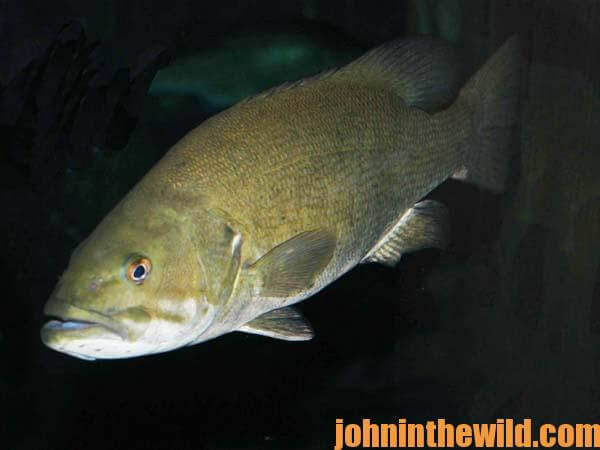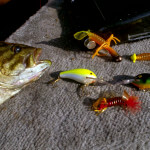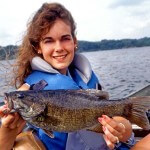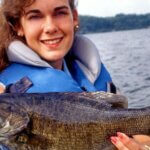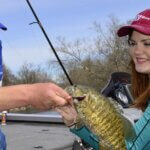John’s Note: The night was sultry, the moon had refused to shine, and the summertime air needed air conditioning. We had been chunking and winding since way before dark. Although we had caught quite a few largemouth bass, the real prize for which we were searching – the striped bronze tiger that prowls the stump rows and rocky bottoms of Pickwick Lake on the Tennessee/Mississippi/Alabama border – had eluded us. Summer is the prime time for catching smallmouths at night along the Tennessee River that meanders primarily through Tennessee and Alabama. And, Austin James of Athens, Alabama, knows how to catch them.
Throughout most of the nation, a 4-pound smallmouth bass is considered a trophy fish.
 But during the summer months of June, July and August on Wilson and Pickwick lakes on the Tennessee River in north Alabama, most smallmouth anglers don’t get excited unless they catch a 6-8-pound smallmouth. To catch this size of smallmouth at night, an angler must know the bottom of the mighty Tennessee River. “The areas where the largest smallmouths hold after dark are along the main river channel where old feeder creeks came into the main river before the lake was inundated,” Austin James explained. “The bass will be holding on the edges of shallow flats that may be 6-12 feet deep on the edge of a 25-30 foot drop. Also there are locks with barge canals and wing walls made up of rocks under the water that were here before the lake was raised, where bass will hold at night. Too, the underwater mounds, built by prehistoric Indians, that come up close to the surface are productive places. At night, the smallmouths will move from that deep water into stumps and rocks in 5 to 7 feet of water to feed. But they’ll be holding very close to that deep water. Although the smallmouth is primarily a bass that likes current, at night, the smallmouth prefers the calm water of the shallow flats to feed.”
But during the summer months of June, July and August on Wilson and Pickwick lakes on the Tennessee River in north Alabama, most smallmouth anglers don’t get excited unless they catch a 6-8-pound smallmouth. To catch this size of smallmouth at night, an angler must know the bottom of the mighty Tennessee River. “The areas where the largest smallmouths hold after dark are along the main river channel where old feeder creeks came into the main river before the lake was inundated,” Austin James explained. “The bass will be holding on the edges of shallow flats that may be 6-12 feet deep on the edge of a 25-30 foot drop. Also there are locks with barge canals and wing walls made up of rocks under the water that were here before the lake was raised, where bass will hold at night. Too, the underwater mounds, built by prehistoric Indians, that come up close to the surface are productive places. At night, the smallmouths will move from that deep water into stumps and rocks in 5 to 7 feet of water to feed. But they’ll be holding very close to that deep water. Although the smallmouth is primarily a bass that likes current, at night, the smallmouth prefers the calm water of the shallow flats to feed.”
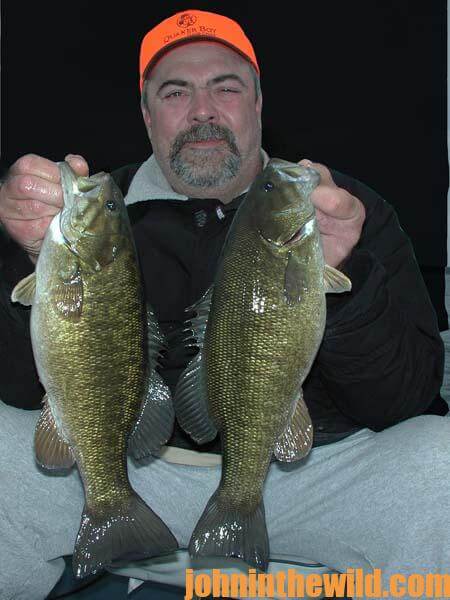 To be able to take the brown tigers holding on the edges of the river and creek drop-offs, Austin James must have a mental picture of the lake and its bottom in his mind. At night he can’t put out floating marker buoys to mark the river ledge drop-offs like daytime anglers do. But James has fished the river so much that at night he seems to have a sixth sense of where his boat is in relationship to the shallow water and the underwater drop-offs.
To be able to take the brown tigers holding on the edges of the river and creek drop-offs, Austin James must have a mental picture of the lake and its bottom in his mind. At night he can’t put out floating marker buoys to mark the river ledge drop-offs like daytime anglers do. But James has fished the river so much that at night he seems to have a sixth sense of where his boat is in relationship to the shallow water and the underwater drop-offs.
“Holding the boat in deep water is important,” James reported. “Usually my boat is in 20 to 25 feet of water, and I’ll cast into 4 or 5 feet of water. Boat position is critical when smallmouth fishing at night, because if you get your boat into that shallow water, you’ll spook more fish than you’ll catch.”
To learn more about John E. Phillips’ bass fishing books in both Kindle eBooks and print books, click here.

